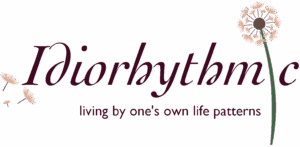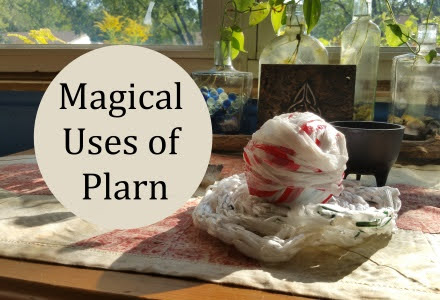In my book, Sew Witchy, I’ve written on magical correspondences of various fabrics. My focus there was on natural fibers (cotton, linen, wool and silk). Not all crafters and sewists limit themselves to natural materials, though. In fact I’d hazard a guess that very few do. One could, I suppose, use only silk or cotton thread, eschew plastic buttons for only metal, wood, bone or horn, leave out zippers or plastic snaps, as well as iron on interfacing, etc.
There is an emphasis on only using natural materials in ritual and magic crafts. While I can understand the reasoning behind it, I find the insistence to border on classism and elitism. Not everyone can afford or has access to only natural materials. And, when we get down to it, everything comes from the earth in one form or another. Everything is ultimately natural when its roots are traced back to its beginnings. Even plastic.
Magick in the Plastic
Our witch ancestors didn’t use colored candles, or have access to the array of crystals and herbs available online. And some might have turned their noses up at colored ribbons, grocery store herbs and store bought besoms as not “traditional” tools. I think it behooves modern witches to see how the practice of witchcraft and magick have changed over the centuries, adapting as new technologies and products have come available, and being open to using materials that might strike us at first as non-magickal.
I’d go even farther to argue that plastic is decidedly magical. It is alchemy at its most refined. Taking the remains of dinosaurs and creating a material which is named after its defining characteristic: its shapeshifting ability.
Yes, plastic does have its drawbacks, its production and longevity make it a serious hazard for the environment. This doesn’t exclude it from being considered a natural material, though. The elements have their destructive aspects. Sheep rearing, silk making, cotton farming and linen production all have their effects on the environment as well.
So, how do we approach plastic as a magical tool? One way is through making and using plarn: yarn made from plastic bags. Many crafters have found clever and practical uses for plarn, from making lightweight and rugged bedrolls for the homeless to arts and crafts to sell to support their families. Plarn has the added benefit of removing plastic bags—one of the hardest items to recycle—from the system.
Plarn Correspondences
Let’s start with a few correspondences. These are associations I have made on my own through study and meditation. They are not meant to be set in stone, and if they don’t ring true to you, feel free to form your own correspondences.
- Deities: Cerridwen, Janus, Kali, Oya (deities of change and transformation)
- Element: Air
- Color: White
- Themes/uses: transformation, durability, flexibility, change
Making plarn is a straightforward process that lends itself to a meditative practice. Use it just as you would yarn to crochet or finger weave a variety of items, or spin it into thread. You can make tote bags, mats, jewelry, and baskets.
If you want to learn about how to make your own magical correspondences, check out my article: Creating Your Own Magical Correspondences.
First posted on Mon, 25 Sep 2017

